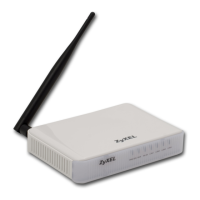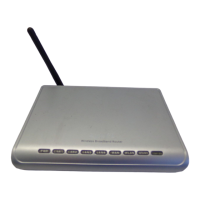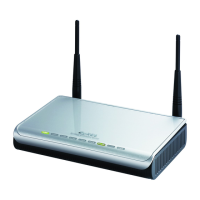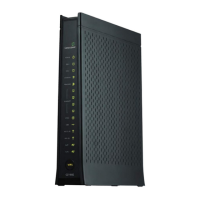Chapter 20 Voice
PMG5317-T20A User’s Guide
215
Outbound
Proxy Address
Enter the IP address or domain name of the SIP outbound proxy server if your VoIP service
provider has a SIP outbound server to handle voice calls. This allows the GPON Device to
work with any type of NAT router and eliminates the need for STUN or a SIP ALG. Turn off
any SIP ALG on a NAT router in front of the GPON Device to keep it from re-translating the
IP address (since this is already handled by the outbound proxy server).
Outbound
Proxy Port
Enter the SIP outbound proxy server’s listening port, if your VoIP service provider gave you
one. Otherwise, keep the default value.
Use DHCP
Option 120
First
Select this to enable the SIP server via DHCP option 120.
RTP Port Range
Start Port
End Port
Enter the listening port number(s) for RTP traffic, if your VoIP service provider gave you this
information. Otherwise, keep the default values.
To enter one port number, enter the port number in the Start Port and End Port fields.
To enter a range of ports,
• enter the port number at the beginning of the range in the Start Port field.
• enter the port number at the end of the range in the End Port field.
DTMF Mode
DTMF Mode
Control how the GPON Device handles the tones that your telephone makes when you push
its buttons. You should use the same mode your VoIP service provider uses.
RFC2833 - send the DTMF tones in RTP packets.
PCM - send the DTMF tones in the voice data stream. This method works best when you are
using a codec that does not use compression (like G.711). Codecs that use compression
(like G.729 and G.726) can distort the tones.
SIP INFO - send the DTMF tones in SIP messages.
Transport Type
Transport Type
Select the transport layer protocol UDP or TCP (usually UDP) used for SIP.
Ignore Direct IP Select Enable to have the connected CPE devices accept SIP requests only from the SIP
proxy/register server specified above. SIP requests sent from other IP addresses will be
ignored.
FAX Option This field controls how the GPON Device handles fax messages.
G711 Fax
Passthrough
Select this if the GPON Device should use G.711 to send fax messages. You have to also
select which operating codec (G.711Mulaw or G.711Alaw) to use for encoding/decoding
FAX data. The peer devices must use the same settings.
T38 Fax Relay Select this if the GPON Device should send fax messages as UDP or TCP/IP packets through
IP networks. This provides better quality, but it may have inter-operability problems. The
peer devices must also use T.38.
QoS Tag
SIP DSCP Mark
Setting
Enter the DSCP (DiffServ Code Point) number for SIP message transmissions. The GPON
Device creates Class of Service (CoS) priority tags with this number to SIP traffic that it
transmits.
RTP DSCP Mark
Setting
Enter the DSCP (DiffServ Code Point) number for RTP voice transmissions. The GPON Device
creates Class of Service (CoS) priority tags with this number to RTP traffic that it transmits.
Timer Setting
SIP Register
Expiration
Duration
Enter the number of seconds your SIP account is registered with the SIP register server
before it is deleted. The GPON Device automatically tries to re-register your SIP account
when one-half of this time has passed. (The SIP register server might have a different
expiration.)
Table 91 VoIP > SIP > SIP Service Provider > Add New Provider/Edit (continued)
LABEL DESCRIPTION

